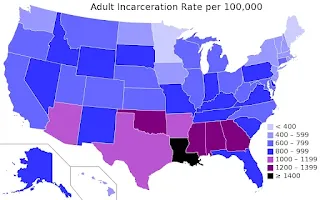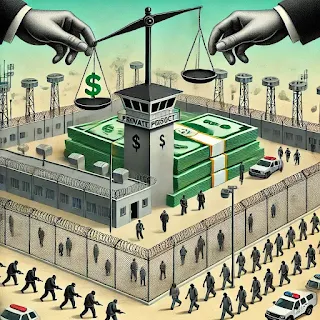There are several reasons why some individuals don't seem to care about going back to prison, despite the hardships it brings. While each person’s situation is unique, here are some common factors that may help explain why your family member and others might feel this way:
1. Institutionalization
- Institutionalization occurs when a person becomes so accustomed to the structured life in prison that they struggle to adapt to freedom outside. After spending long periods in prison, some individuals find the outside world overwhelming and unpredictable, and may even feel safer or more comfortable in the routine and security of prison life. In these cases, prison becomes a place where they know what to expect, and they may even form a sense of belonging.
2. Lack of Support and Resources
- Upon release, many ex-inmates face barriers to employment, housing, and social support. With a criminal record, finding a job or a stable place to live can be difficult, leading to a cycle of frustration and hopelessness. Without a support system, the temptation to revert to criminal behavior or the comfort of the prison environment may outweigh the benefits of freedom.
3. Mental Health and Addiction Issues
- Many people who frequently return to prison struggle with mental health issues such as depression, anxiety, or trauma. If they aren’t getting the help they need while outside of prison, these issues can make it harder for them to stay out of trouble. Additionally, substance abuse is a common challenge among those who are repeatedly incarcerated. The cycle of addiction can lead to reoffending and returning to prison, as the person may feel they have little control over their circumstances.
4. Peer Pressure and Negative Environment
- Often, individuals released from prison return to the same environments and social circles that contributed to their initial criminal behavior. Peer pressure from friends or family involved in illegal activities can lead to reoffending. If the person lacks positive role models or opportunities, they may feel stuck in the same patterns of behavior.
5. Criminal Justice System Factors
- The criminal justice system itself sometimes perpetuates recidivism. For instance, short prison sentences followed by a lack of post-release support services can make it harder for individuals to reintegrate into society. Without rehabilitative programs that help ex-inmates build skills, get treatment for addiction, or find employment, they may fall back into the behaviors that landed them in prison.
6. Sense of Hopelessness or Fatalism
- Some individuals who frequently return to prison may develop a sense of hopelessness or fatalism about their situation. They may feel that they’re destined to keep going back to prison and see no point in trying to change. This feeling can be exacerbated by repeated failures to reintegrate or societal stigmas attached to being an ex-offender.
7. Social Connections in Prison
- For some, prison becomes a community where they have social ties. They may feel disconnected from their families or society outside, but inside prison, they have a support system of fellow inmates. This sense of belonging can make prison feel like home, which makes leaving that environment even harder.
8. Lack of Purpose or Direction Outside
- Many inmates struggle with finding purpose once they are released. Without a clear direction, goals, or means to support themselves, they may fall back into old habits. In contrast, prison provides a structured routine, even if it’s restrictive, giving them some form of purpose during the day.
Addressing the Cycle
If you’re trying to help a family member who falls into this cycle, consider focusing on:
- Encouraging rehabilitation programs, both inside and outside of prison, that address the root causes of their behavior.
- Finding supportive networks or re-entry programs that offer guidance on employment, addiction recovery, and mental health.
- Building positive connections and helping them find a sense of purpose that can motivate them to stay out of prison.




.jpeg)
